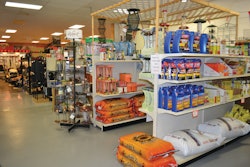Which are you more likely to believe: a company representative telling you how great their product or service is, or a recommendation from another person about how it worked for them?
If you’re like most people, the words from a fellow consumer pull more weight than even the best written ad copy. That’s why you need to use testimonials from satisfied customers in every ad and marketing piece you create for your dealership.
One of the main reasons why people don’t buy something is that they’re fearful of making the wrong decision. So when they see that a product or service is endorsed by someone else—someone in their same situation or community—that fear is minimized. Testimonials are a great way of influencing others to feel comfortable about buying your products or services.
Unfortunately, few business professionals actively seek out testimonials from their customers and clients. They mistakenly wait for people to give them testimonials, and when they do get them, they don’t know how to use them effectively. In reality, getting and using a list of strong testimonials is easier than you think. The following tips will help you get testimonials to increase traffic in your dealership as well as your profits.
How to get them
Choose satisfied customers who represent your target demographic. The best testimonials are written by people who are similar to your ideal customer. Therefore, be specific about who you solicit a testimonial from. Look over your customer files and choose the people who exemplify the best case scenario for your product or service. This may be a contractor if you have a large commercial customer base or a homeowner if it is more consumer-heavy.
Say to the customer, “I’d love for you to share your experience with this product/shop service. Would you please write a short testimonial?” Most people will cheerfully say yes. Since you want more happy customers just like these, let their words sell for you.
Offer to write the testimonial for them. Often, if someone declines your request to write a testimonial, it’s because they’re too busy or feel they don’t have adequate writing skills. In that case, offer to write the testimonial for them. Simply say, “I’ll be glad to write the testimonial for you. Just tell me what you’d like to say about the product. You can review what I write and we can use it as is or you can change it.” Most people will leave the testimonial as is, happy they didn’t have to take the time to write it, and glad to assign their name to the comments.
Look through your past notes and correspondence. Chances are you’re sitting on a pile of testimonials and don’t even know it. Go back through your past emails and correspondence from customers and clients. Are there a few nice sentences in some of those messages? If so, ask the person if you can use their words in your marketing materials. They’ll often agree.
How to write them
Show results. Whether you write the testimonial or your customer does, it needs to specifically show what results the person experienced from the equipment or service. A testimonial that simply says what a wonderful company you have or how nice you are is not saying anything meaningful for the reader. A specific testimonial will speak to results. Use testimonials that talk about how a piece of equipment saved the customer time and money.
The more specific a testimonial is, the stronger it sells for you. Specific testimonials take away the fear of making the wrong decision and help people feel safe about making the purchase.
Keep it short. Each word of the testimonial should have value. Therefore, if someone writes you a page-long testimonial, edit out any words that don’t directly address the end result from your service or product. This doesn’t mean you change the meaning of what someone writes; you simply edit out the parts that don’t contribute to the meaning. Often, the more words you take out, the stronger the testimonial becomes. Also, it’s easier to read and will stand out more.
Include a name and title when possible. Rather than attribute your testimonial to “John S., Nebraska,” use the person’s real name, company name, title, and/or location whenever possible, as in “John Smith, owner of Smith Landscapes,” or “John Smith, Madison, WI.”
This makes your testimonial more believable. Most people will be happy to include their full name and other information, because the strongest human desire is to feel appreciated and recognized. Getting their name in print somewhere fulfills that need and is often perceived as fun. Landscaper contractors will also appreciate the opportunity to get their business' name out there.
How to use them
Include a testimonial or two in your ads and marketing pieces. Whether you’re doing a print, online, radio or TV ad, be sure to include some testimonials. For print, it’s best to have testimonials stand alone from the text rather than try to weave them into the ad copy. For radio and TV, either the announcer or an actor can recite the testimonial, or if your customer is agreeable, have him or her appear in your radio or TV spot to give the testimonial personally. Other marketing pieces that should feature your testimonials include your website, brochures, direct-mail pieces, postcards, billboards, newsletters, and even social media updates.
Create a book of testimonials. Each time you receive a kind letter from a customer or client, highlight the key parts (the parts that state benefits to the customer), put the letter in a clear plastic sleeve, and compile it in a big binder.
Keep this book or binder of testimonials in your store or office for customers to browse through while they’re waiting. Or, create a page on your website where you feature all your testimonials. There’s no limit to how many testimonials you can include in your book or on your page.
Frame your best testimonials. Frame some of your best testimonial letters and post them on the showroom walls and behind the sales or service counters. Again, highlight the best parts so your customers can easily see the benefits. If you have outside salesmen calling on larger clients, put the best testimonial letters in your “leave behind” kit—the package of information you leave behind for the prospect.
The ultimate sales tool
The next time you’re writing copy for an advertisement or marketing piece (and struggling with what information to include) simply go to your past testimonials. It’s always better when someone else sings your praises, so let your customer sell for you. The sooner you start using testimonials in every marketing message you create, the sooner you’ll realize that testimonials really are the ultimate sales tool.



















